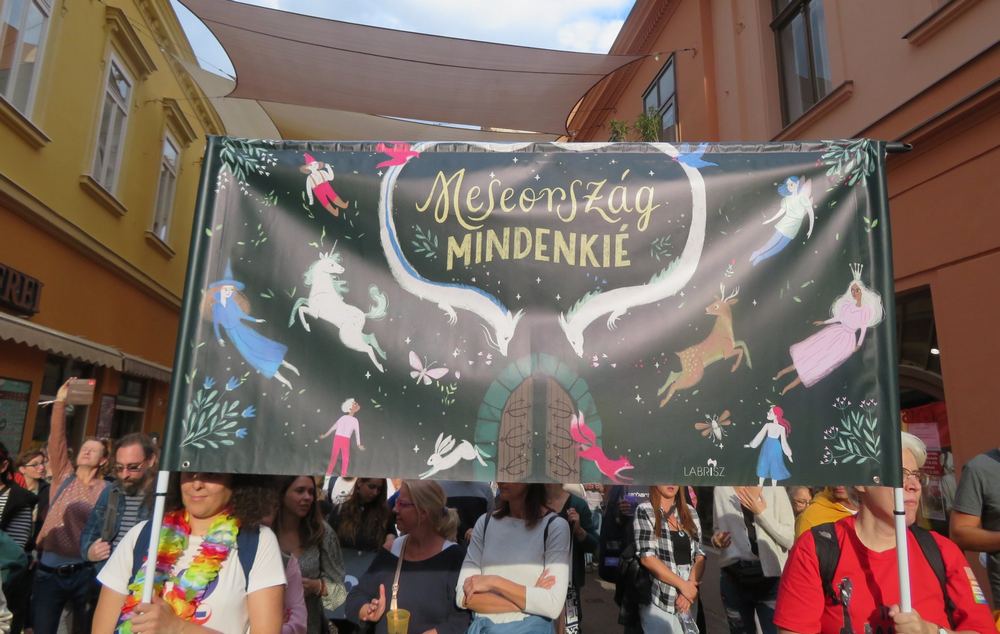Labrisz is promoting the volume "Fairy Tales for Everyone" with a new study. According to the article, in the fairy tales of the lesbian association , "contrary to heteronormative logic, the witch is not necessarily the possessor of inherent corruption, but a socially excluded mother who likes children, and the desire for homosexual love can also mean happy fulfillment" .
Labrisz Leszbicus Egyesület the volume in 2020, is promoting a recent study well-known called Meseország sekkyéé .
Memorable: for the compilation, the association selected among the fairy tales submitted by amateur writers for a competition, and for the collection of texts they also produced an "occupational plan" for the teachers, how to introduce kindergarten and elementary school groups to, among other things, "the acceptance of the exchange and expansion of general gender roles " .
The author of the current study, Dávid Szőke, recalls that when Dorottya Rédai, the project manager of the story collection, was chosen by Time magazine as one of the hundred most influential people in the world in 2021, Terry Reintke, head of the European Parliament's LGBTIQ+ internal group, praised Rédai and the publisher: " A princess who falls in love with another princess and the two of them ride off into the sunset together? How much such a story would have meant to me as a little girl!"
The author also points out that "the universe created by the Brothers Grimm had a decisive influence on the cultural traditions of European fairy tales", where " we can find variants of male supremacy and hierarchical arrangements of social roles. Their heroines are the archetypes of the wild female nature to be tamed (King Beard) and, in contrast, the passive and devoted woman (Cinderella, Sleeping Beauty, Snow White and the Seven Dwarfs, Beauty and the Beast), whose mission is the mandatory heterosexual marriage that represents happy fulfillment. ".
"The patriarchal view of women is perfectly exemplified by Jakob Grimm's thesis on witches, according to which, while men's restless lives were filled with war, hunting, agricultural and handicraft work, women had the opportunity to practice secret magic, since the weaker sex her imagination is warmer and more receptive, and her inner, sacred power of divination is always worthy of respect" feminine merit. This statement by Grimm sensitively presents the insight sanctioned by patriarchy, which, based on the opposite pair of nature and culture, marks the man as an active member of civilization, while the woman as nature to be invaded or tamed, explains Szőke.
According to him, "these tales reflect the colonial attitude that defines European culture: the heroines and their knights are both carriers of the white race and racial purity. ... The fairy tales included in the canon, even if in an implicit form, reflect and strengthen the cultural tendency that pushes all other ethnic and gender minorities to the periphery, and wants to see women as merely obedient human beings who submit to men.
Praising the volume, Labrisz says: "the novelty of the Fairytale for Everyone selection is that it completely rewrites this cultural tradition and undertakes postmodern reinterpretations of fairy tales. Contrary to heteronormative logic, in these tales the witch is not necessarily the possessor of inherent corruption, but a socially excluded mother who likes children, the desire for homosexual love can also mean happy fulfillment, and the heroines are outlined as active controllers of events."
By the way, the organization recently announced that the book is also available in Dutch, Polish, Slovak, German, Swedish and Estonian, and the English, Finnish, Czech and French editions will arrive soon.
Source: hirado.hu
The featured image comes from the Facebook page of the Labrisz Lesbian Association.












